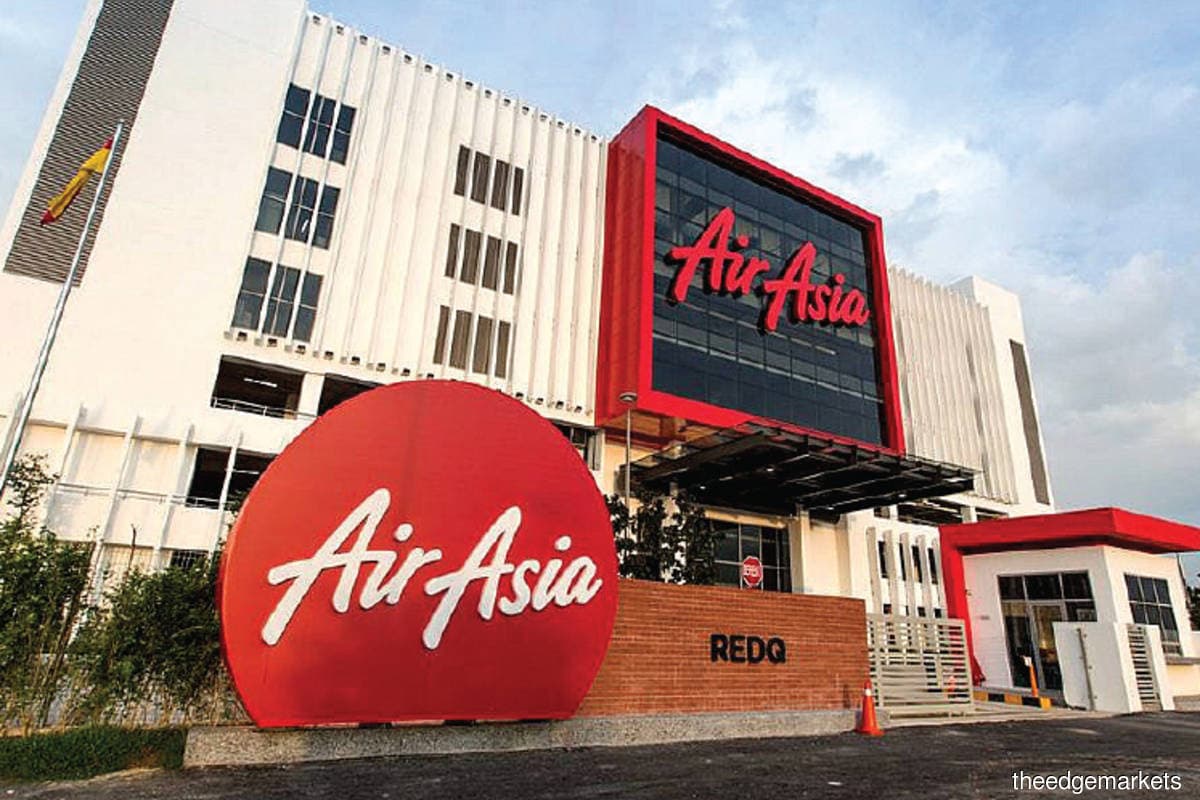
KUALA LUMPUR (Aug 26): A rights issue by AirAsia Group Bhd, which is very likely to happen, could see the airline operator issuing four billion new shares at 35 sen apiece to raise RM1.4 billion in new equity this year, CGS-CIMB Research’s model assumed.
Its analyst Raymond Yap added that the equity issue may spill over into the financial year ending Dec 31, 2021 (FY21).
“AirAsia saw an operating cash outflow of RM956 million during 1H20 (the first half of 2020), in addition to RM773 million in principal and interest repayments on its lease liabilities. As a result, AirAsia saw its cash balance decline by RM1.6 billion over the first six months of the year to RM996 million (a decline of RM1 billion in the first quarter of 2020 [1Q20], followed by a further RM600 million drop in 2Q20),” he noted.
“The drop in cash balance slowed in 2Q20 because AirAsia stopped payments of virtually all of its lease liabilities and implemented substantive cost cuts. The cash burn should slow even more in 3Q20 as AAGB (AirAsia) works to restructure the majority of its excess fuel hedges and has also restarted domestic flights in Malaysia after interstate travel was permitted from June 10,” Yap added.
He noted that with regional travel off the table until FY21 at the least, especially considering the high level of infections prevailing in Indonesia, the Philippines and India, AirAsia had admitted that it may need to raise up to RM2.5 billion in new capital, which he believes was made under the assumption that its aircraft lessors continue to agree to some level of lease payment postponement, without which the amount of capital needed may be even higher.
The local research house pointed out that potential derating catalysts for the stock include a slower-than-expected recovery in domestic travel demand due to the shortening of the year-end school holidays in Malaysia — from six weeks to only two weeks — and a weaker-than-expected recovery in international travel demand due to sustained Covid-19 border closures and/or the reluctance of passengers to travel on longer-distance flights.
“Another potential derating catalyst is a dilutive equity issue sometime in the foreseeable future. Downside risks include potentially higher-than-expected jet fuel prices should the Opec+ production cuts continue for an extended duration; we have pencilled in Brent crude oil price assumptions of US$41 (RM170.97)/bbl and US$49/bbl for FY20 and FY21 respectively, and jet fuel price assumptions of US$43/bbl and US$51/bbl for the same years. Brent is currently trading at US$45/bbl and the jet fuel spot price at US$44/bbl, both above our full-year average [forecasts],” it said.
“Upside risks include a potential discovery of a Covid-19 vaccine, which may help restore confidence in air travel. A stronger-than-expected ringgit exchange rate versus the US dollar is another upside risk; we have used an average rate of RM4.20:US$1, but the ringgit is currently trading at RM4.18. Approximately 70% of AAGB’s pre-tax cash costs are denominated in US dollars,” it added.
Following its record quarterly net loss of RM803.55 million for the first financial quarter ended March 31, 2020 (1QFY20), AirAsia sank further into the red with a net loss of RM992.89 million for 2QFY20.
For the cumulative six months ended June 30, 2020 (6MFY20), AirAsia registered a net loss of RM1.8 billion, versus a net profit of RM111.8 million a year earlier, while revenue dropped 57% to RM2.43 billion from RM5.65 billion.
CGS-CIMB Research reiterated its "reduce" call for the stock and lowered its target price to 15 sen from 58 sen.
As at the time of writing, AirAsia’s stock was trading at 69 sen, down 2.84%.
Edited by Lam Jian Wyn
